Visit to Raczki
Zena Cook wrote in 2014:-
THE ROSENOV FAMILY FROM RACZKI
In 1904 my mother’s family immigrated from Raczki in Poland to Birmingham, England, where their name was changed to Rose. They came from a long line of Torah scholars and continue to live as observant Jews till this day. My great grandparents had ten children whose descendents can be found not only in the UK, but also in Israel, the USA, South Africa and Australia.
BACKGROUND
Whilst hiking in Spain, I met a Lithuanian woman who invited me to Lithuania, offering to help me research my ancestral family on my father’s side. She had been such a great help that I reciprocated by inviting her to Israel the following winter to meet my sister, the family historian.
The next year my Lithuanian friend and her partner invited me to join them for part of their summer vacation. Again she offered to help me explore yet more of my family history, this time not in Lithuania, but in an area of Poland that was reputed to be quite beautiful, with primordial forests and fresh lakes, the location of the Jewish shtetl of Raczki.
DOWSPUDA
It was a scorching hot day when we drove from our lakeside accommodation in the Wigry National Park to Raczki, the home of my mother’s maternal family in the late 19th century. We chose an older, less-travelled route, rather than following the modern highway, driving south along the Suwalki-Augustov road until we discovered a turn-off to Raczki. After that there were no signs. We turned right off the road and followed a dirt track that wandered through fields and forests with occasional signs of habitation.
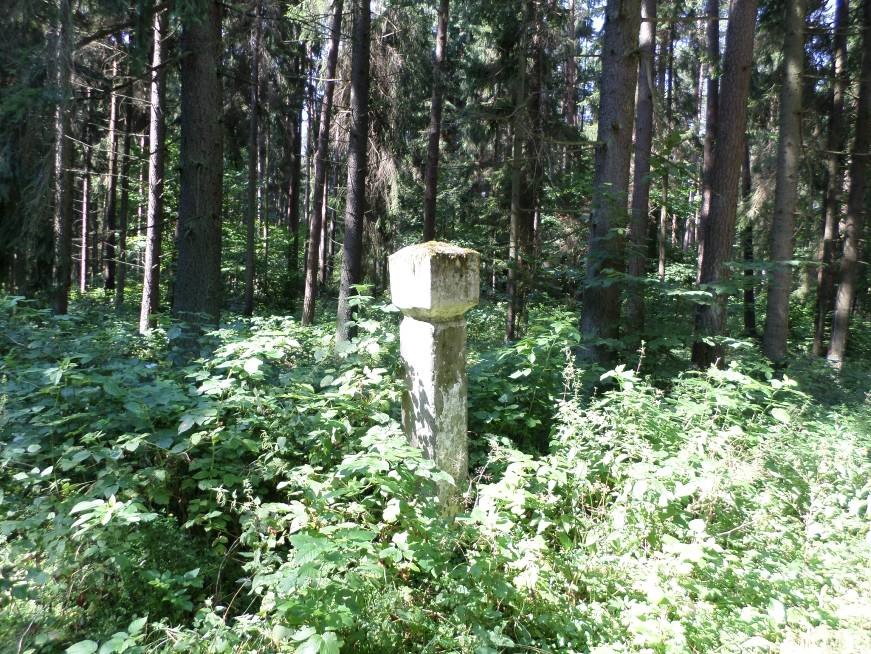
We forded a small stream (a tributary of the Rospuda river) and came out onto another old track, lined by religious relics and historic landmarks.
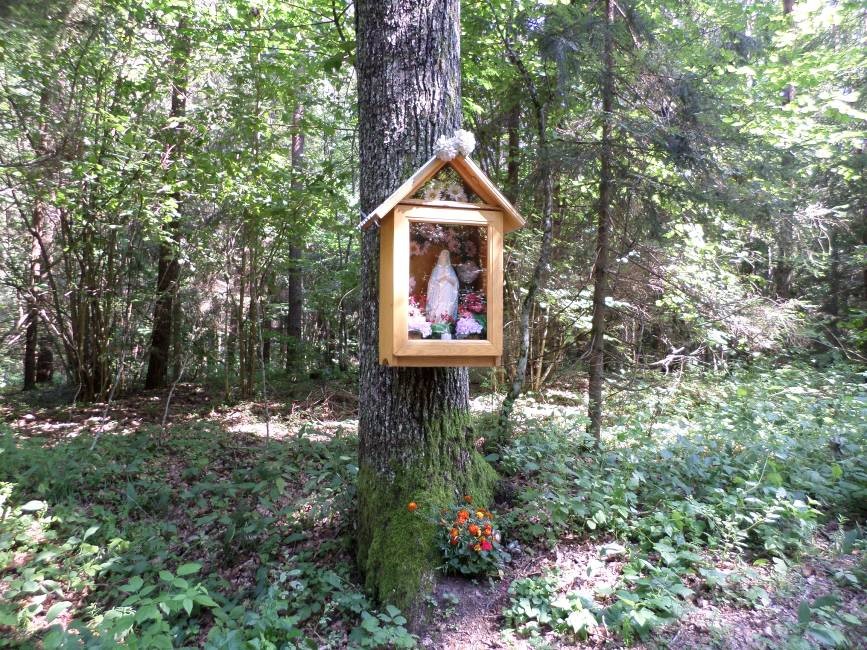
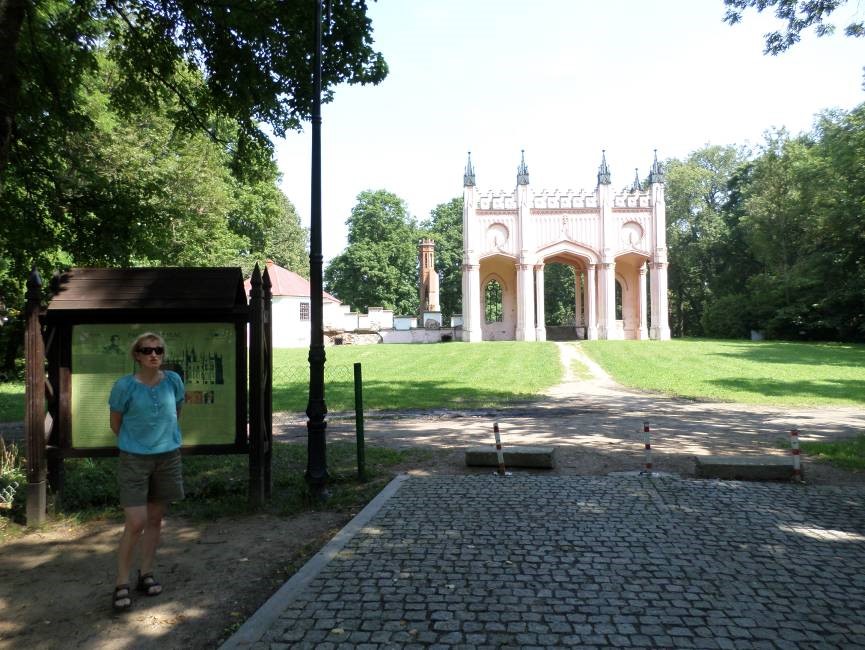
We followed this track which eventually joined up with the main road at the village of Dowspuda. We stopped to look at the ruins of a 19th century palace, called Pac’s palace (Pac was an aristocrat who distinguished himself during the Napoleonic wars). Rows of lime trees lined the road to the castle, with small Soviet-built housing blocks on one side and a government building on the other.
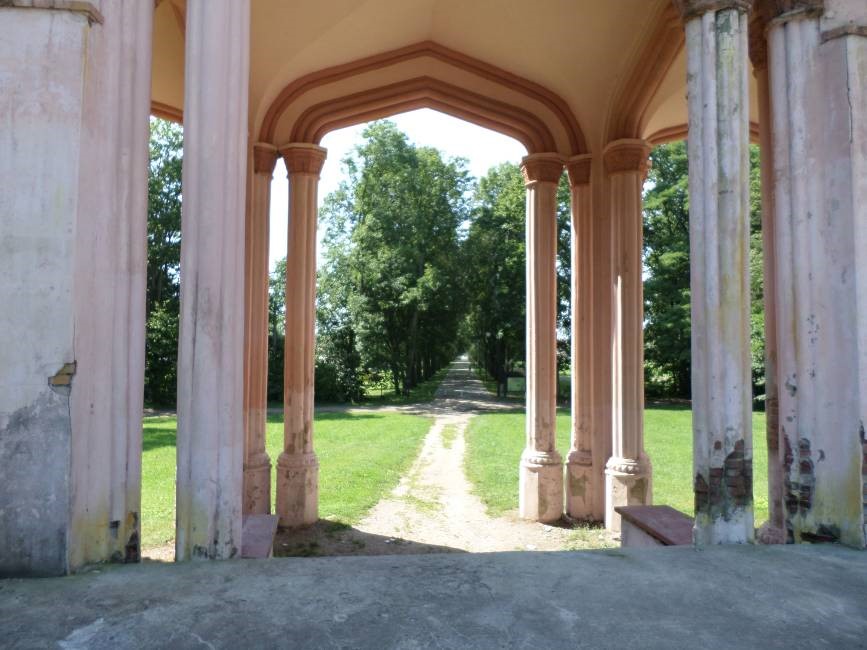
RACZKI
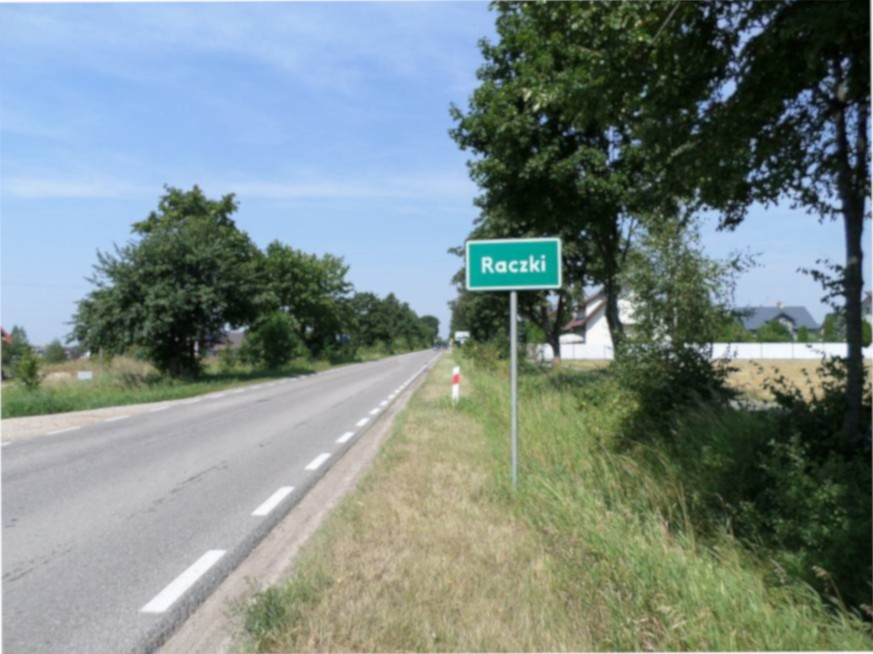 entering the town
entering the townRaczki lay another mile down the road and, although it was hot, I wanted to walk into the town to get the feel of it.
Eventually I came across a pedestrian path at the side of the tree-lined road that led me to think that the town had a more imposing entrance in former times. I tried to imagine the town in more prosperous days. Today the paths are no longer well kept and development seems modern and uncoordinated, with houses facing different directions. I noticed that there was little attempt at landscaping public areas.
As I walked further into town the houses were older and traditionally faced the street.
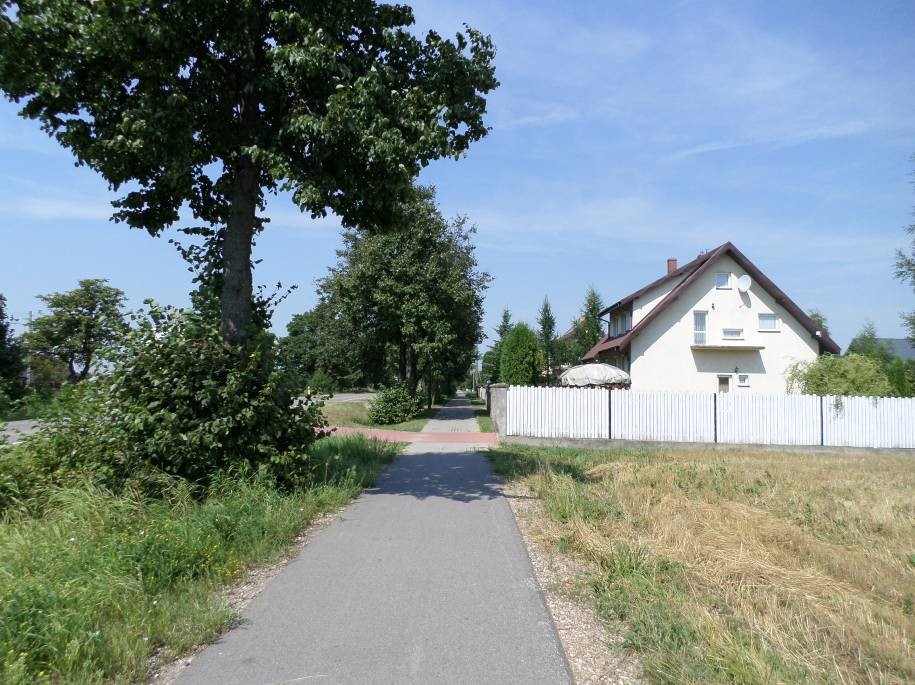 |
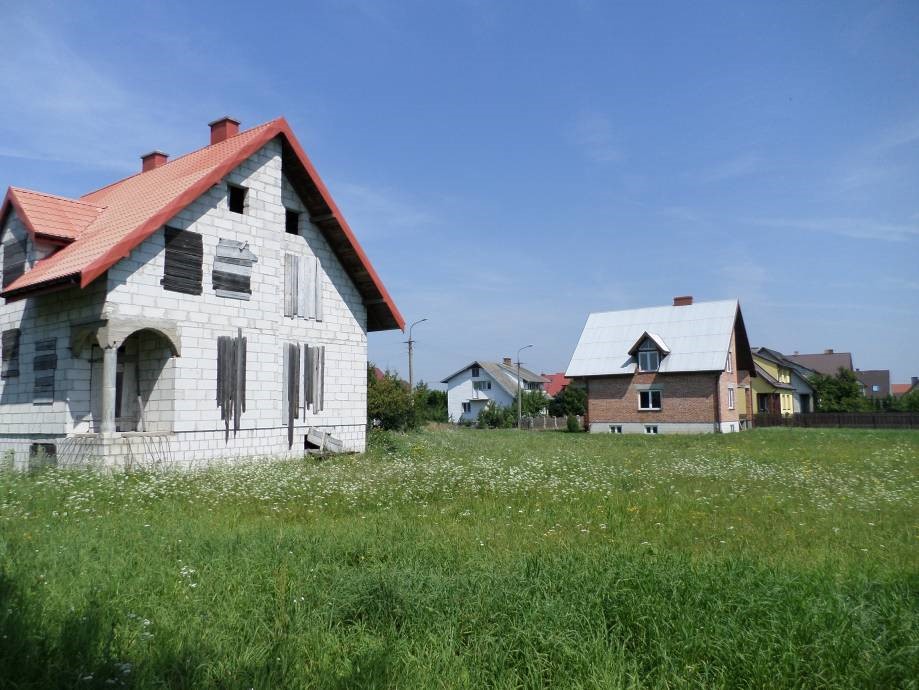 |
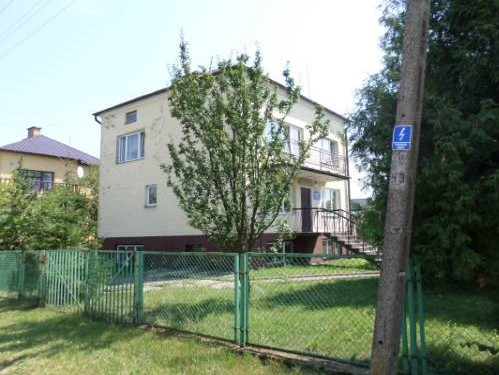 |
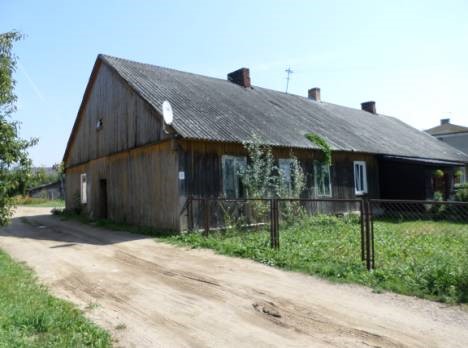 |
There were several roads leading off the main road. Those to the right led towards the river while those to the left led to a nearby village.
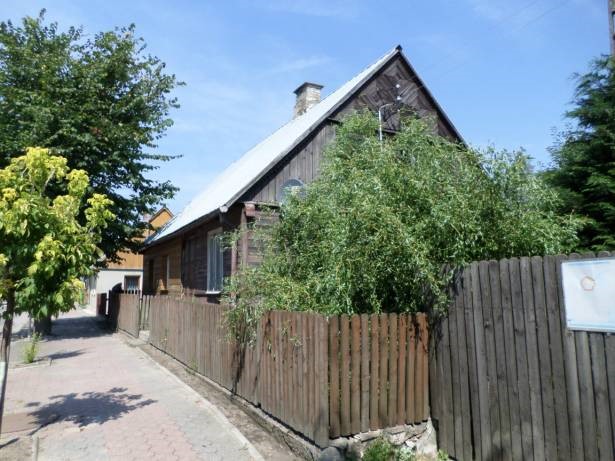
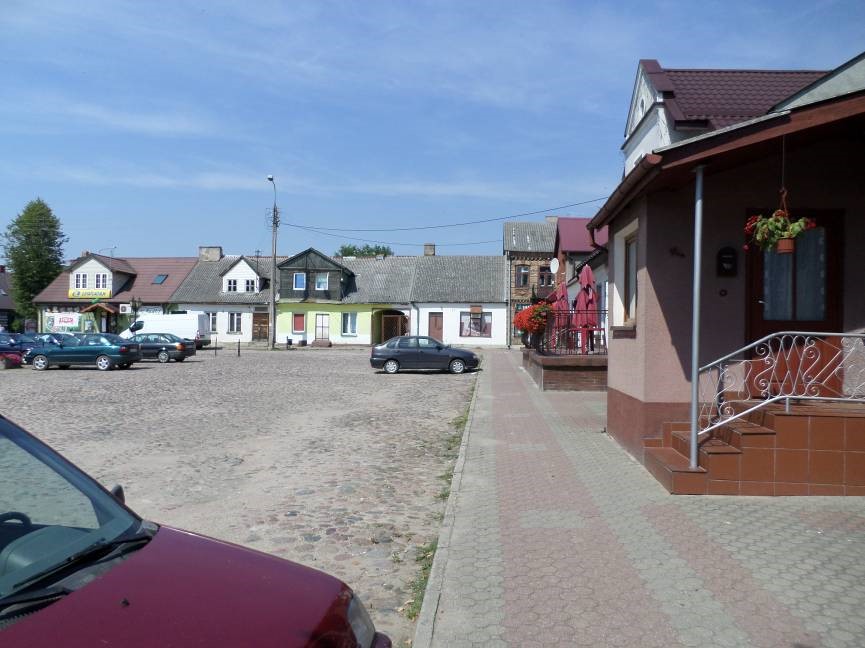
Finally I reached the town square, where my friends had parked the car.
No one knew where the tourist information office was. We also asked about the cemetery, but no-one seemed to know about that either. Everyone we saw was fairly young. We saw no old people as such. We found no one who could speak English, German or Russian. They only spoke Polish. In fact they seemed quite shy and not used to visitors. We entered a couple of shops and chatted to people as best we could. They seemed to know little about the past.
We left the town square on foot and walked north towards the church where we could hear the bells ringing midday, hoping to find someone to talk to. As we walked, we could hear a tune from the Town Hall, also signifying midday. As the buildings petered out a large church came into view to our right, behind a wrought iron fence. We entered the courtyard to find that, although the church was open, nobody was around.
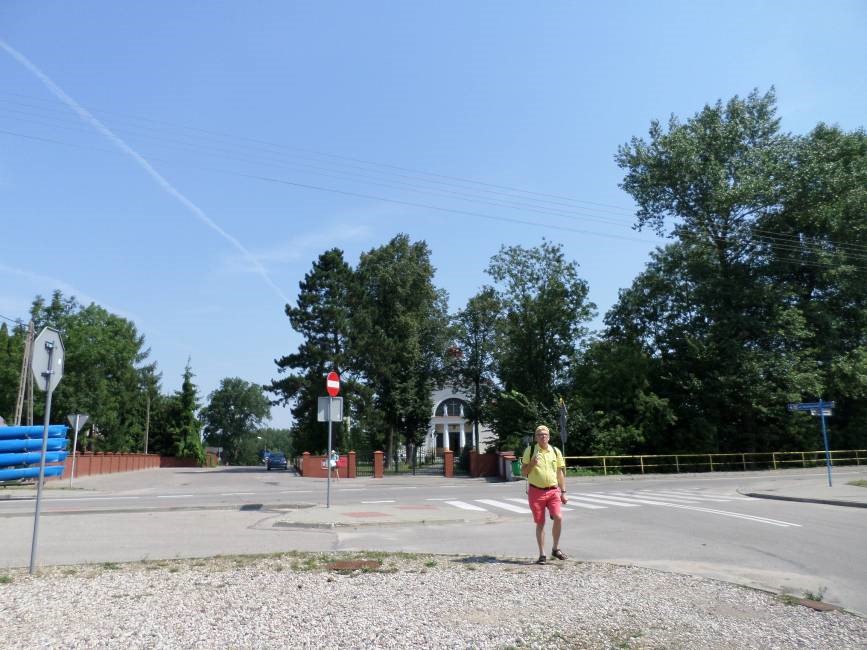
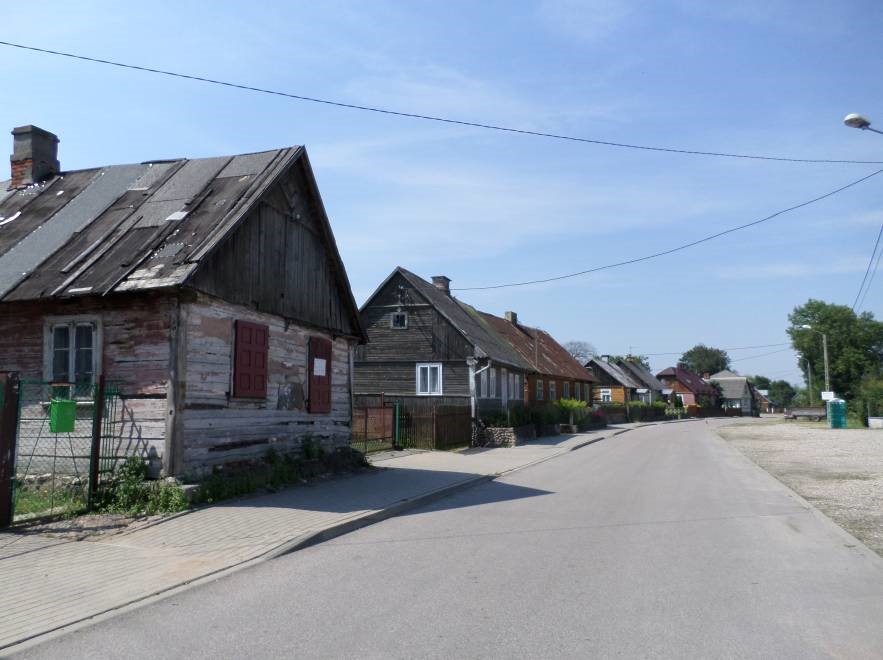
I sat in the shade outside the church and reread the description of the town my sister had pieced together. (The heat was difficult to deal with by this time.) There was a detailed description of the location of the cemetery.
Opposite the church there was a row of neatly ordered, old wooden houses. From their appearance I suspected that at least one of them must have been there during my great grandfather's time. The carpentry work seemed very old. The others were newer but still quite old. One had a wall made of wood and might have been renovated at some point. They seemed inhabited.
The road opposite the church ran diagonal to the present main road and I wondered whether it could have been a main thoroughfare in former times, since there was little evidence of development along the present main road. Indeed the modern town seemed to peter out as the main road turned left, away from the river.
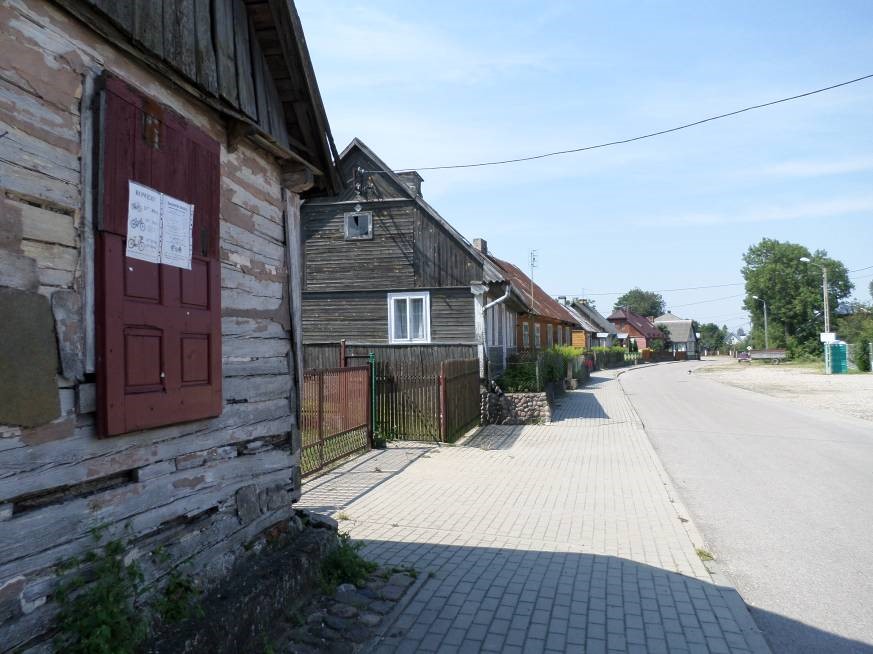

We backtracked through the town asking for information as went. We noticed three men with bicycles lounging in the shade in the town square. One of them spoke a little English. He had spent some time in New York City, not unusual in Poland we found. It was a struggle for him to speak to us in English because he had obviously forgotten a lot. Another man spoke some Russian and, although he was somewhat inebriated, my friend was able to communicate with him. With the help of his friends he managed to explain where the cemetery was. All three men were friendly and willing to help.
RACZKI JEWISH CEMETERY
We left Raczki, driving south before turning west towards the town boundary.
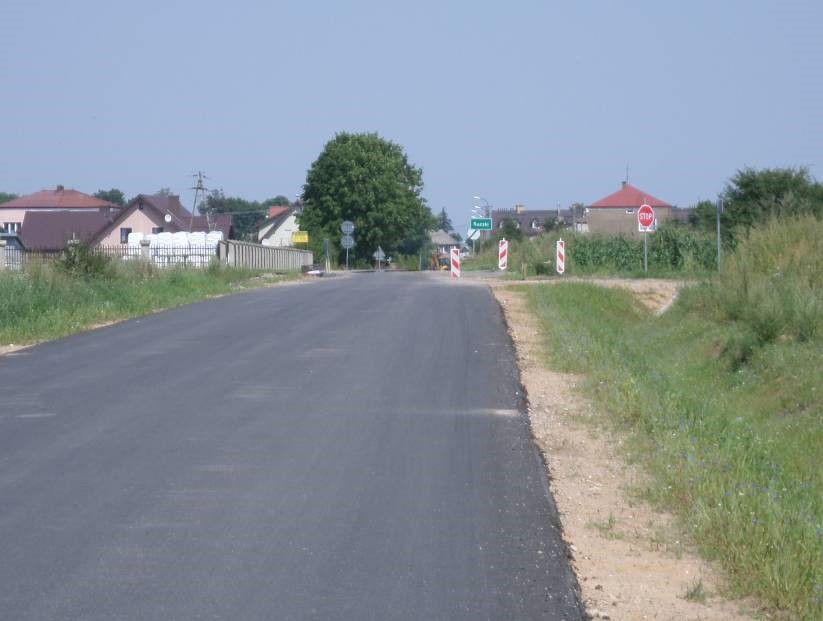
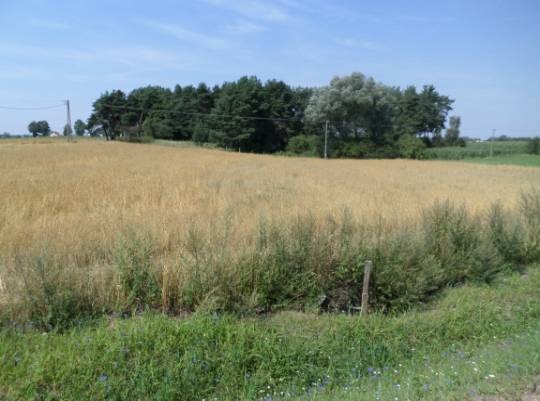
To the north was a small wood, with what looked like fence posts on one side.
First we explored the wood but quickly became entangled in stinging nettles and bushes. My friend’s partner was convinced that he saw bear tracks!
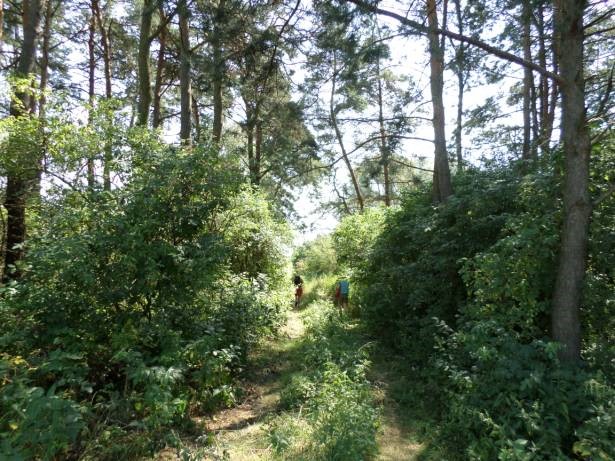
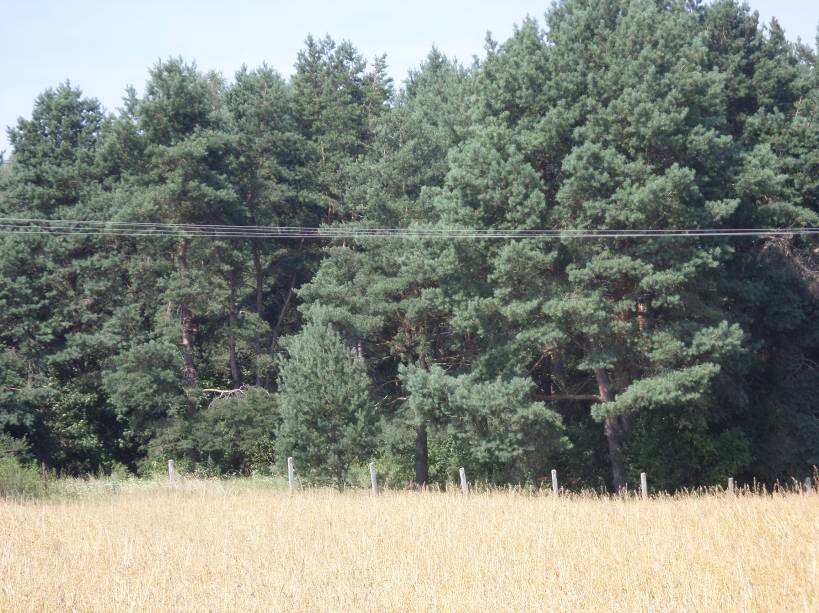
We realised we couldn’t go any further. After much discussion we agreed we were not in the right place and decided to try again further down the road. As we walked back to the car, I tried to focus my thoughts on where the cemetery might be located. It occurred to me that a cemetery would more likely be on the side of the wood, rather than in the middle of it. It also occurred to me that the fence posts I saw could be the remains of the fence "with two wires" written about in my sister’s description.
Meanwhile I had noticed a trampled but very uninviting path through a wheat field to the broken down fence. By this time my friends had returned to the car. Despite the heat, insects and uneven ground, I decided to follow it. I walked in a straight line past the fence posts and through the tangled grasses. The path became even more uneven and difficult to walk on.
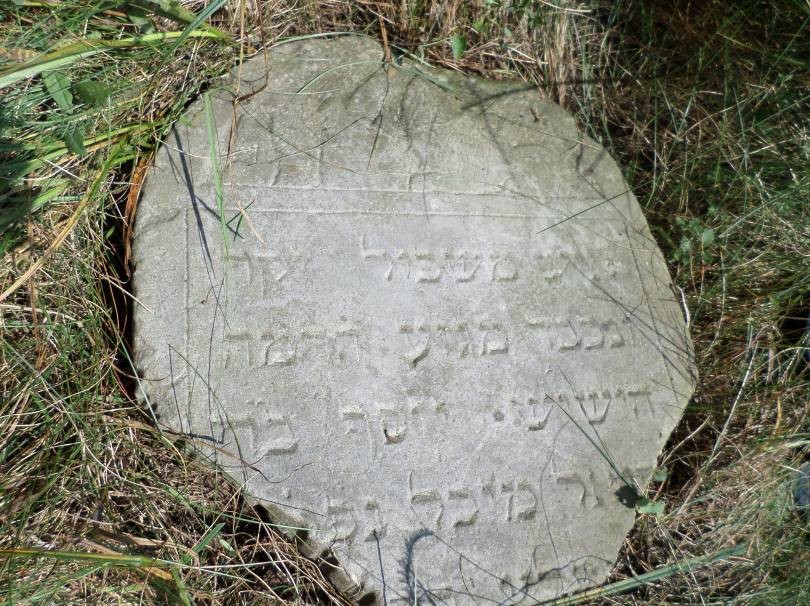
Then to the left I saw what looked like an old stone buried in the long grass. It had no writing on it but was definitely not there by chance. It was to be one of only two gravestones still visible. The other one had Hebrew writing on it and confirmed that I was in the right place! I could feel other grave stones beneath my feet, but they lay buried beneath earth and grass and could not be identified easily.
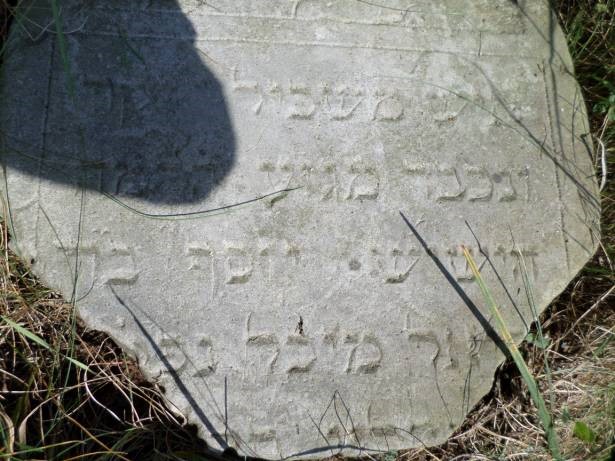
I waved to my friends and they made their way to where I was standing.
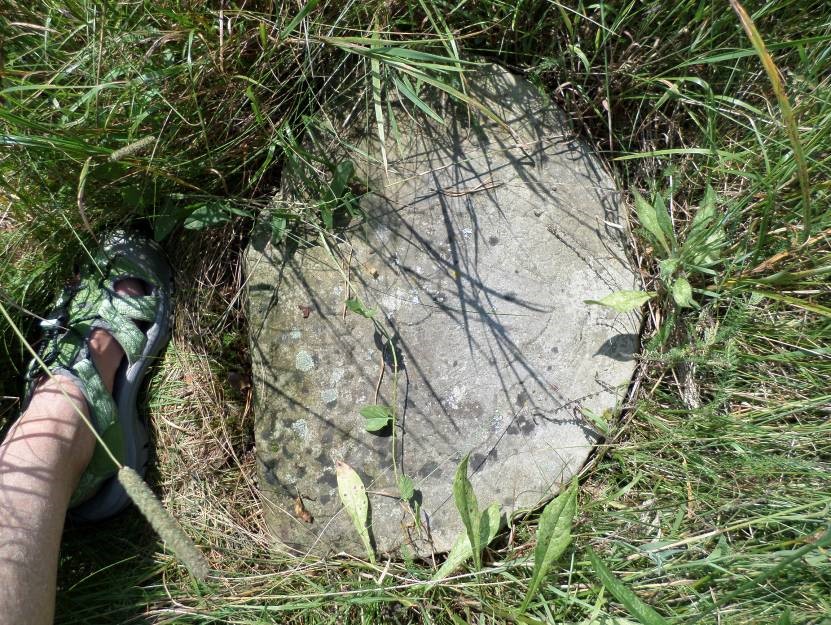
The cemetery seemed to enjoy some sort of protected status, but was completely neglected. Clearly it was returning to its natural state and soon there would be nothing left to see. The satisfaction of finding the cemetery was tinged with sadness at its neglect. I considered the possibility that in all likelihood some of my mother’s family were buried there.
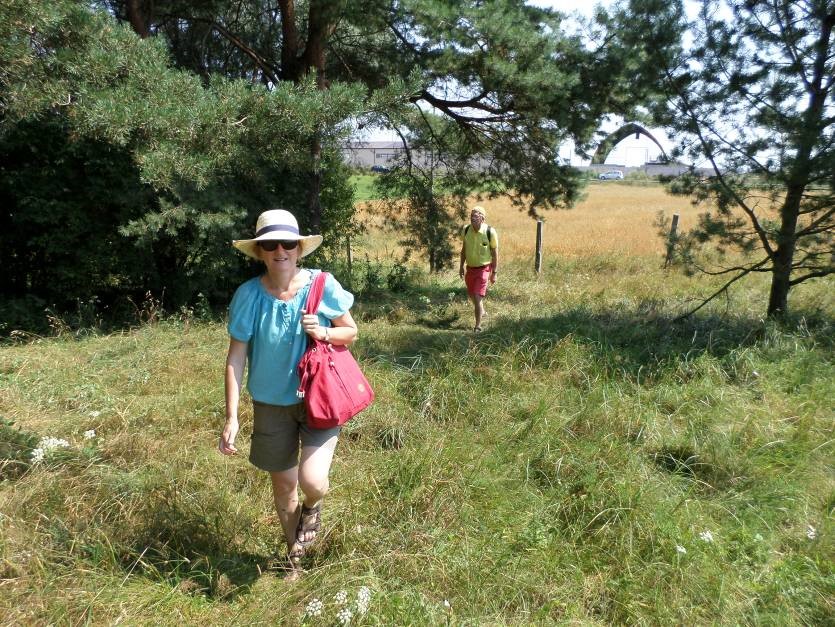
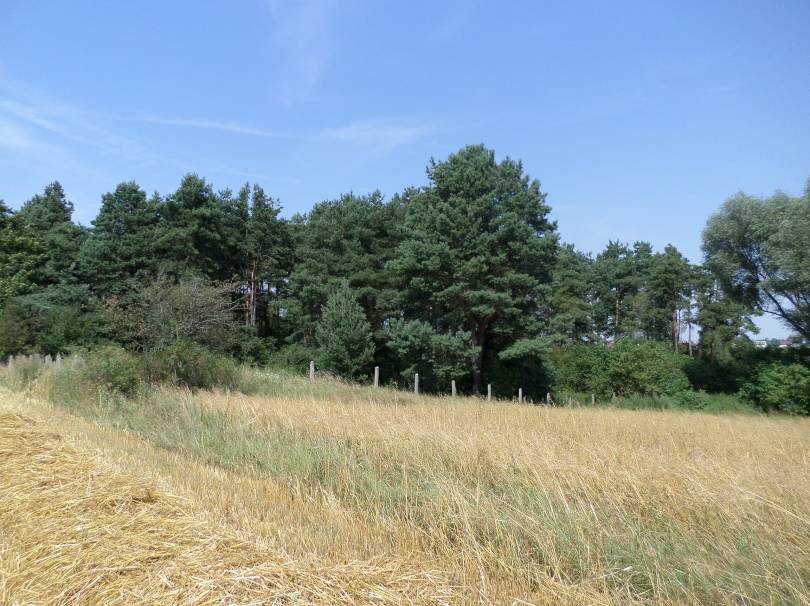
I took a last look at what appeared to be the perimeter and then walked back through the wheat field.
We left Raczki along a different route, east along the main road towards Suwalki and then south to Wigri.
A LAST STOP IN SEJNE
Fortunately I was able to conclude my visit to Raczki on a more cheerful note.
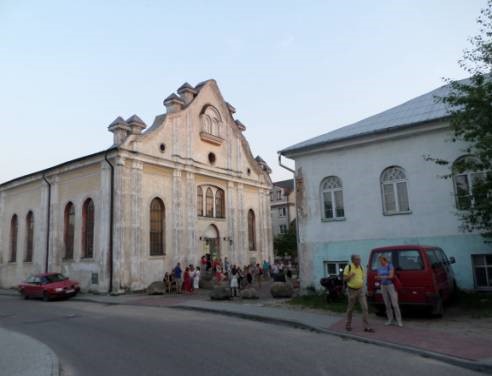
Later that week we visited Sejne, where we were told there was a 19th century Jewish Synagogue (the White Synagogue). Adjacent was the old Yeshiva, now turned into a film institute, focusing on multicultural events. Sejne once had a relatively large Jewish population.
That night a local band played Klezmer music in the synagogue. Notice the talented female drummer on the right!
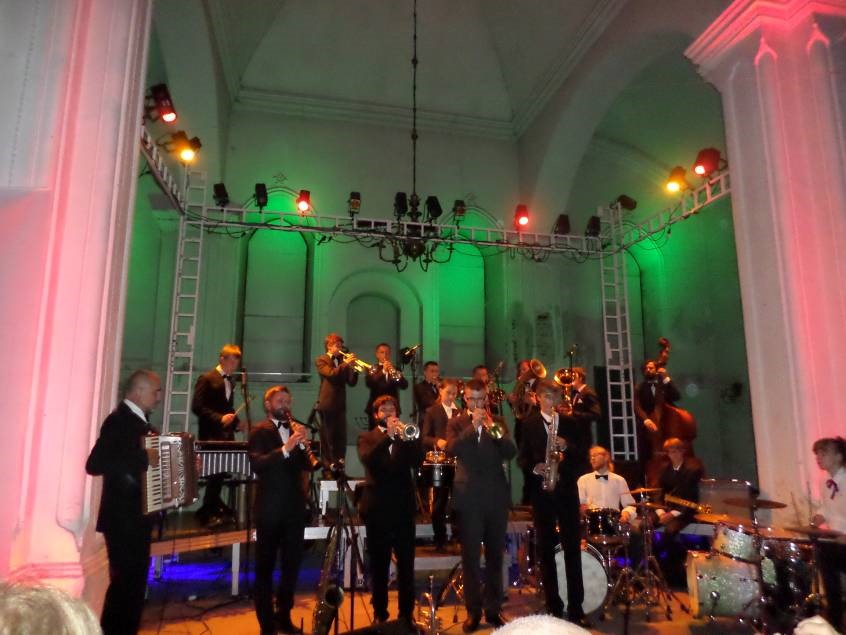
Zena Cook 2014
